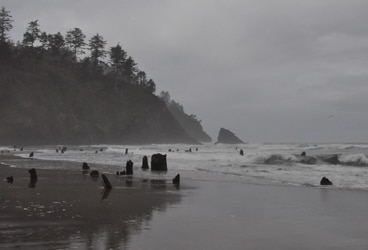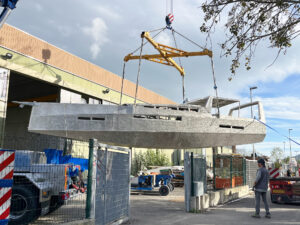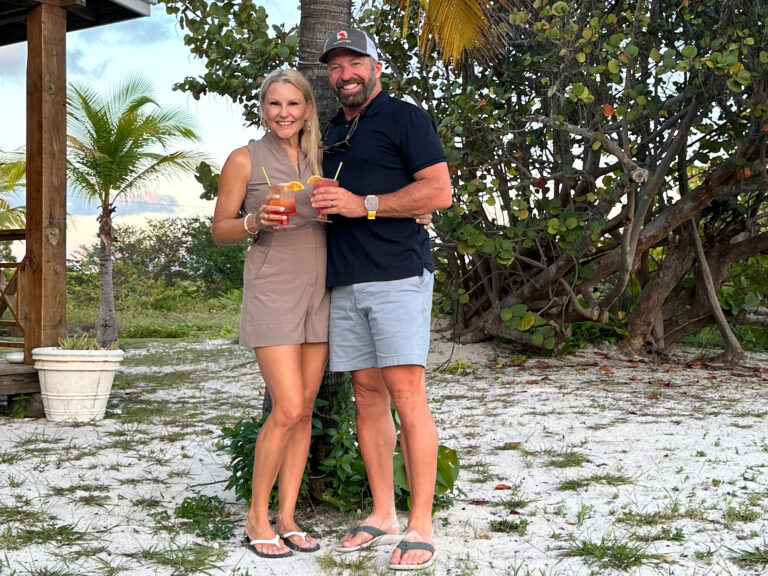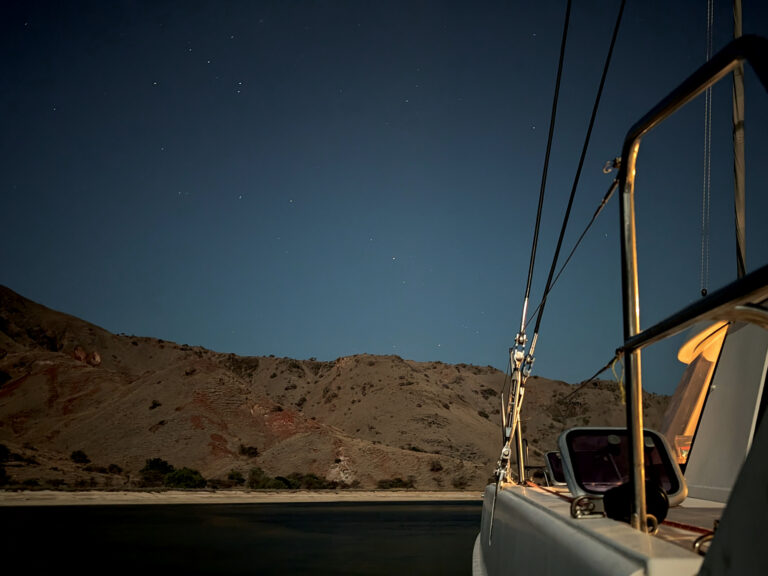
Del Viento- ghost forest
This past summer and fall, en route from Mexico to Canada, we stopped at 14 ports and anchorages between San Diego and San Francisco (mostly to visit with family and friends). North of San Francisco, we made one more stop in California (Eureka) and then only one stop on the entire Oregon-Washington outside coast (Astoria). It’s not that we don’t have as many friends north (we don’t), it’s that this stretch is comparatively desolate, with few ports or anchorages.
But we sailed (mostly motored) almost always in sight of this wild coast. Neither of us has spent time here and we wondered–even aloud–about its magnificence. I reasoned it would resemble the rugged beaches of Big Sur I know well. Windy figured it would remind her of cold, windy days she’s spent on the beaches of Humboldt County.
A couple weeks ago we hopped on the ferry and rented a car and drove down there to visit friends who were staying about an hour north of the small Oregon seaside community of Newport. I knew we’d hit the good breweries nearby and discover the beaches we’d sailed past. None of us expected to see ghosts…
The forest is just a few miles north of a giant sea stack called Proposal Rock, in a town called Neskowin (pop. 170). It’s not a forest like one you may imagine on the Oregon coast, mostly because it is really on the coast—in the water actually. And forget leaves and branches and birds and shade, this is a ghost forest, made up of ancient Sitka spruce trees—that aren’t there. I’ve never seen anything like it.
Until 1998, these trees were the stuff of rural legend, of stories told and re-told. Generations of residents in the area spoke of a forest of massive stumps that appeared in the surf every 20 or 30 years before quickly disappearing. Then, some of the largest winter storm waves ever recorded on the Oregon coast hit at the end of 1998. When that storm season ended, the newly eroded beachscape featured a ghost forest for all to see: about 200 massive stumps stood in the surf, rooted where they’ve been mostly hidden for sixteen centuries.

Eleanor resting at the top of a bluff she reached after climbing up a 250-foot dune. See that coat next to her? Yep, she left it right there and had to climb that dune a second time to get it.
It’s thought that these trees were casualties of a major subsidence event (this is where the ground level drops suddenly to fill a void beneath), sparked by a massive quake along the Cascadia fault line around 400 AD. The trees quickly died and rotted away—except for the root structure and 6-7 feet of trunk. This part of the trees was preserved in the dense sand that covered them up soon after (in fact, the nutrient-rich forest floor the trees grew in is preserved beneath the sand too).
But whereas before the sand had always returned–carried ashore by the prevailing summer currents–to cover the exposed stumps, after 1998 the stumps remained exposed. For the first time in 1,600 years, the stumps are weathering 15 years of continuous exposure, deteriorating in the elements. They are covered in barnacles, pounded by the relentless surf and tide. Scientists aren’t sure why, only that this period of exposure is unique. The leading hypothesis is our changing climate.
–MR
I__n our twenties, we traded our boat for a house and our freedom for careers. In our thirties, we slumbered through the American dream. In our forties, we woke and traded our house for a boat and our careers for freedom. And here we are. Follow along at http://www.logofdelviento.blogspot.com/








